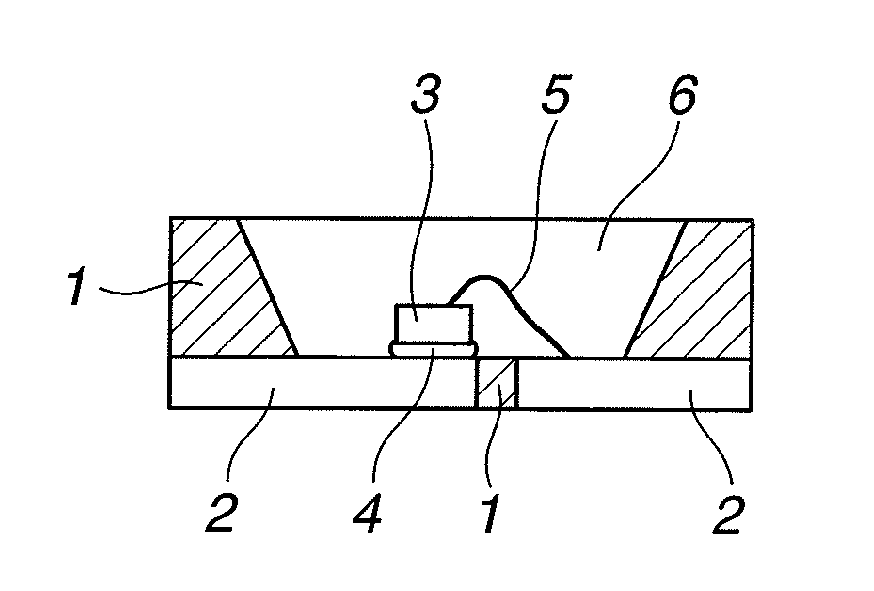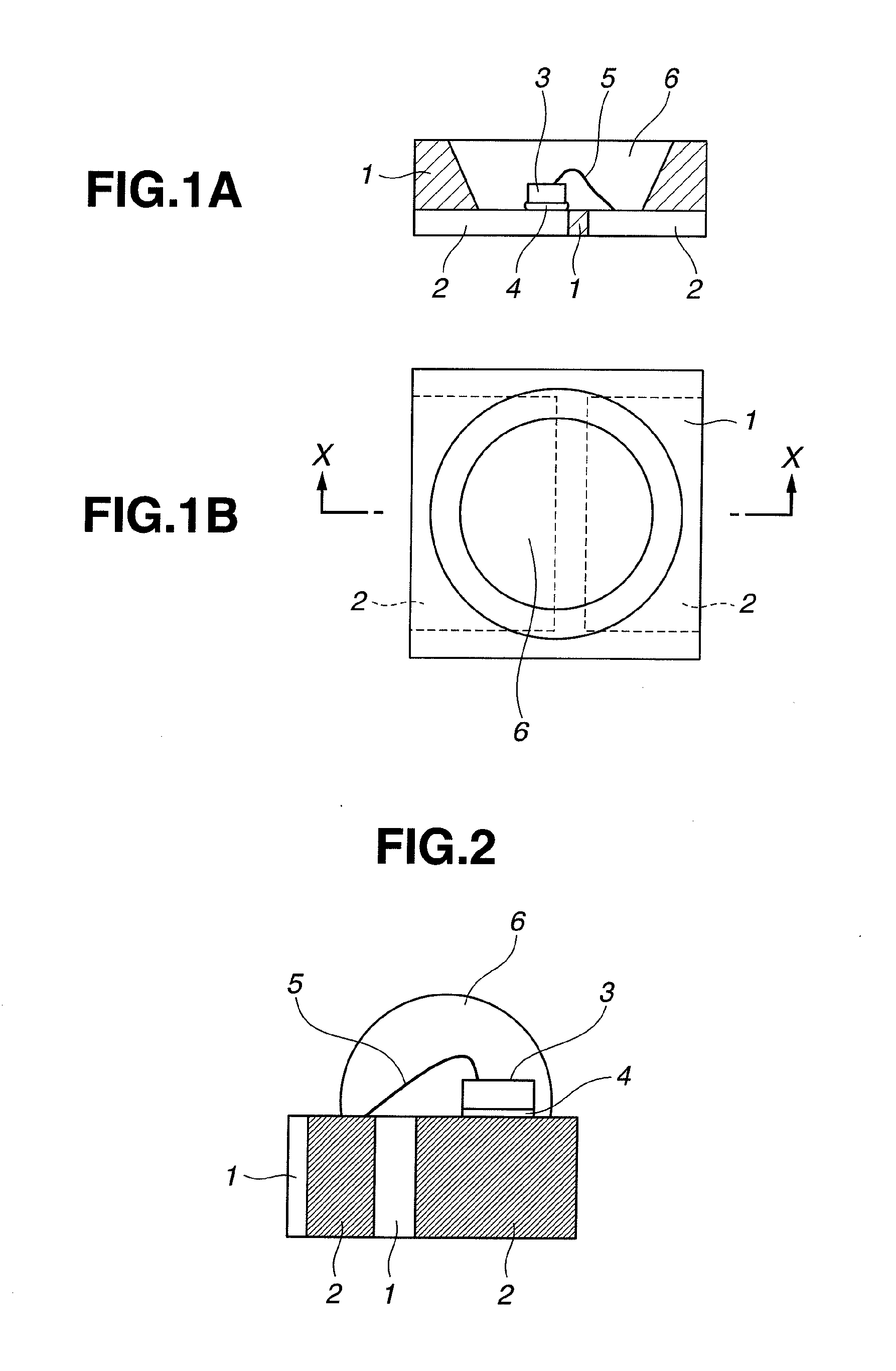Resin composition, reflector for light-emitting semiconductor device, and light-emitting semiconductor unit
a technology of semiconductor devices and resins, applied in the direction of semiconductor/solid-state device details, lighting and heating apparatus, solid-state devices, etc., can solve the problems of resin degradation and discoloration by light, not suitable for high-reliability reflectors, and reduce reflectance, so as to achieve high photoreflectance and not undergo much reduction in luminance.
- Summary
- Abstract
- Description
- Claims
- Application Information
AI Technical Summary
Benefits of technology
Problems solved by technology
Method used
Image
Examples
synthesis example 1
[0073]Methyltrichlorosilane (100 parts by weight) and toluene (200 parts by weight) were placed in a 1-L flask. Under ice cooling, a mixed solution of water (8 parts by weight) and methyl alcohol (60 parts by weight) was added dropwise. The dropwise addition was conducted at an internal temperature of −5 to 0° C. over 5 to 20 hours. Subsequently, the resulting mixture was heated, and was then stirred at a reflux temperature for 20 minutes. The reaction mixture was then allowed to cool to room temperature, and water (12 parts by weight) was added dropwise at 30° C. or lower in 30 minutes, followed by stirring for 20 minutes. After water (25 parts by weight) was further added dropwise, stirring was conducted at 40 to 45° C. for 60 minutes. Subsequently, water (200 parts by weight) was added, and the resulting organic layer was separated. The organic layer was washed until it became neutral. After that, the resulting organic solution was subjected to azeotropic dehydration, filtration ...
synthesis example 2
[0074]Methyltrichlorosilane (50 parts by weight) phenyltrichlorosilane (70.6 parts by weight) and toluene (200 parts by weight) were placed in a 1-L flask. Under ice cooling, a mixed solution of water (8 parts by weight) and methyl alcohol (60 parts by weight) was added dropwise. The dropwise addition was conducted at an internal temperature of −5 to 0° C. over 5 to 20 hours. Subsequently, the resulting mixture was heated, and was then stirred at a reflux temperature for 20 minutes. The reaction mixture was then allowed to cool to room temperature, and water (12 parts by weight) was added dropwise at 30° C. or lower in 30 minutes, followed by stirring for 20 minutes. After water (25 parts by weight) was further added dropwise, stirring was conducted at 40 to 45° C. for 60 minutes. Subsequently, water (200 parts by weight) was added, and the resulting organic layer was separated. The organic layer was washed until it became neutral. After that, the resulting organic solution was subj...
synthesis example 3
B-Staged Epoxy Resin
[0077]Tris(2,3-epoxypropyl) isocyanurate (“TEPIC-S,” trade name, product of Nissan Chemical Industries, Ltd.; 45 parts by weight), methylhexahydrophthalic anhydride (“RIKACID MH,” trade name, product of New Japan Chemical Co., Ltd.; 55 parts by weight) and triphenyl phosphite (3 parts by weight) were placed in a reaction vessel, and were then reacted at 80° C. for 10 hours. After the reaction, a prepolymer was taken out, and was then cooled to solidify a B-staged epoxy resin (A-3).
[0078]Phosphorus-based antioxidant: triphenyl phosphite (product of Wako Pure Chemical Industries, Ltd.)
Curing Catalysts
[0079]Curing Catalysts for Epoxy Resins[0080]Phosphorus-based curing catalyst: methyl-tributyl-phosphonium-dimethylphosphate (“PX-4 MP,” trade name, product of Nippon Chemical Industrial Co., Ltd.)[0081]Curing catalyst for silicone resins: zinc benzoate
Inorganic Fillers
[0082]Fused spherical silica (product of Tatsumori Ltd.; average particle size: 15 μm)[008...
PUM
| Property | Measurement | Unit |
|---|---|---|
| particle size | aaaaa | aaaaa |
| emission wavelengths | aaaaa | aaaaa |
| wavelengths | aaaaa | aaaaa |
Abstract
Description
Claims
Application Information
 Login to View More
Login to View More - R&D
- Intellectual Property
- Life Sciences
- Materials
- Tech Scout
- Unparalleled Data Quality
- Higher Quality Content
- 60% Fewer Hallucinations
Browse by: Latest US Patents, China's latest patents, Technical Efficacy Thesaurus, Application Domain, Technology Topic, Popular Technical Reports.
© 2025 PatSnap. All rights reserved.Legal|Privacy policy|Modern Slavery Act Transparency Statement|Sitemap|About US| Contact US: help@patsnap.com



